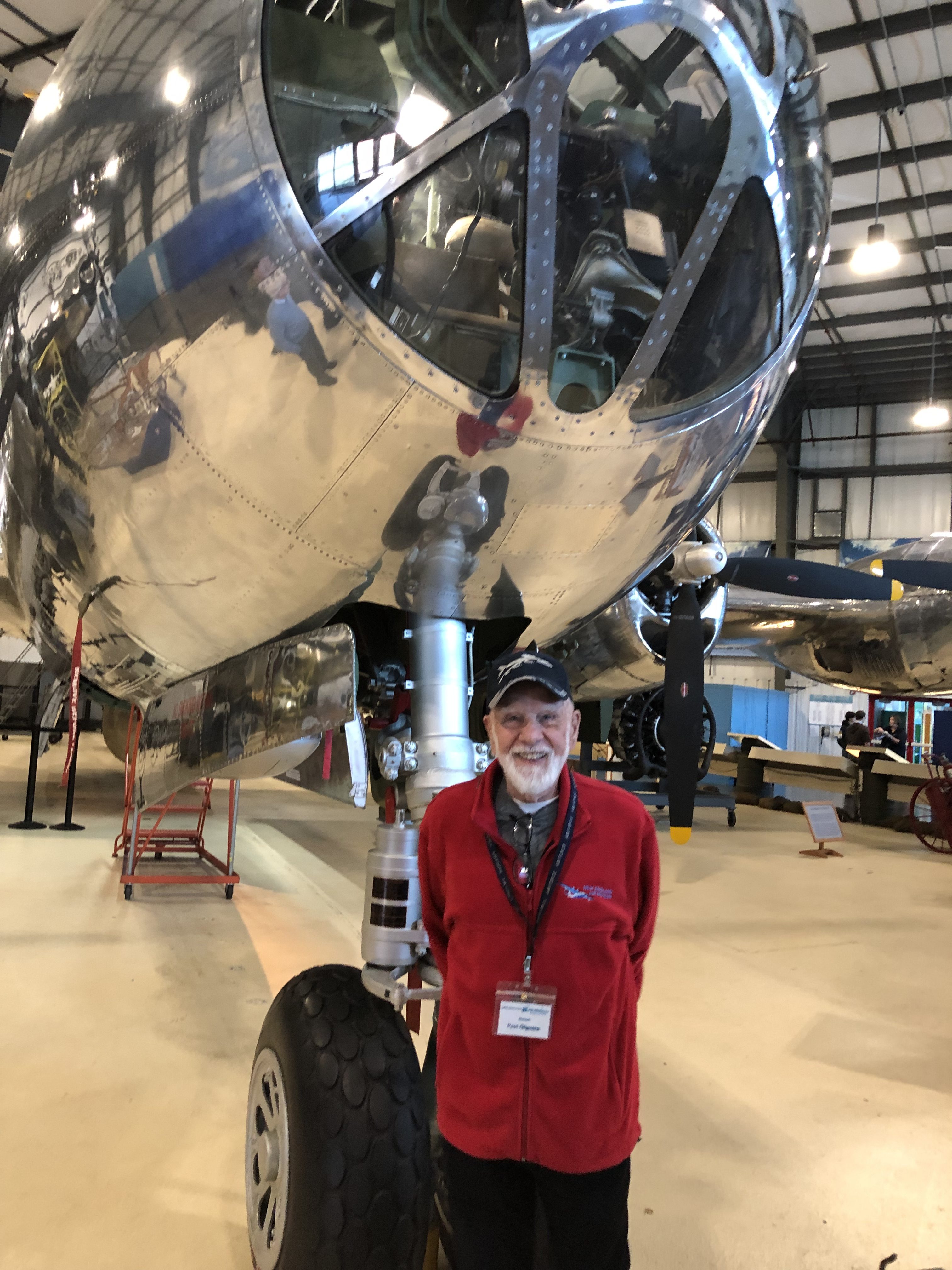We went to the New England Air Museum today, home of a beautifully restored B-29, and met two former B-29 crew members. One is 92 and one is 94. Both were navigators, which meant a lot of radar work (identifying islands and cities both for navigating and bombing through clouds). Every B-29 crew member endured missions 12-15 hours in length and horrific weather encounters (see “Plowing through the weather in a B-29”).

It is a great museum in general, but it was wonderful to be there on Veterans Day and have a Huey crew chief from Vietnam show us around the Huey, two B-29 crew members show us the B-29, etc.
Sad to think that the World War II veterans will be gone soon.
Looks great, thanks for the travel tip. The Skycrane is my favorite aircraft. Looks like a giant bug. One Saturday afternoon in downtown Chicago not long after 9/11, I heard the sound of what I thought were jet engines spooling up. My first thoughts were ‘We’re not being invaded, are we?’, followed by, ‘Why would there be Harriers downtown?’ Turns out it was a civilian Skycrane lifting large street light poles into place.
My friend who died a few years ago was a 20 year old B-17 pilot who arrived in England in October 1944, so he missed the most brutal unescorted raids on Europe. Nevertheless he lost 18 engines and two airplanes (thankfully no crew members) in 35 missions. The missions had two critically dangerous phases: forming up hundreds, even thousands, of armed bombers in the shitty weather and flying the bomb runs into AA defenses that had dialled in most of the bomb run tracks. The flak was a lottery; one second a formation was intact; the next second a plane goes poof! The form-ups were basically blind; a pilot might break out of the overcast staring up at a tail gunner like today’s aerial refueling formations, or chewing off a piece of the other plane. After the raid, more shitty weather to return – if the home field is not open just follow some ground lights to any field and ferry home the next day. He landed both mortally damaged ships in Belgium, which was in Allied hands. He was out of the military for a time, but back in for Korea and Viet Nam and the Air Defense Command, which recruited old bomber pilots for the all-weather fighters. He retired as 2-star commander of the Air Weapons Center at Tyndall AFB, recently closed indefinitely by Hurricane Michael. His last ride was the F-106 in the ’80’s, not a sterling example of interceptor development.